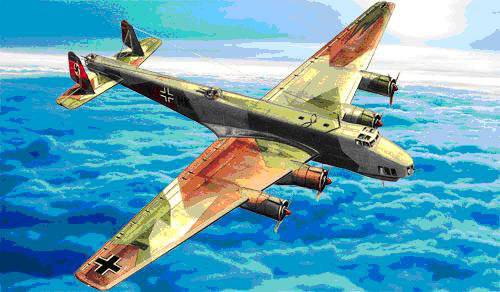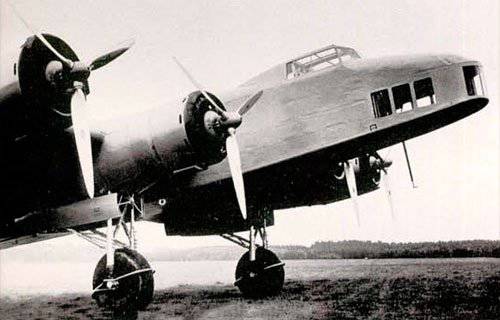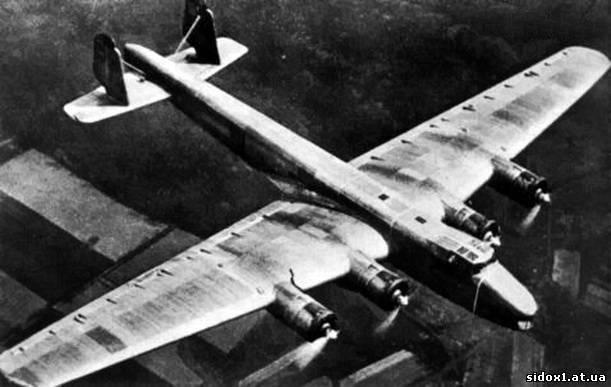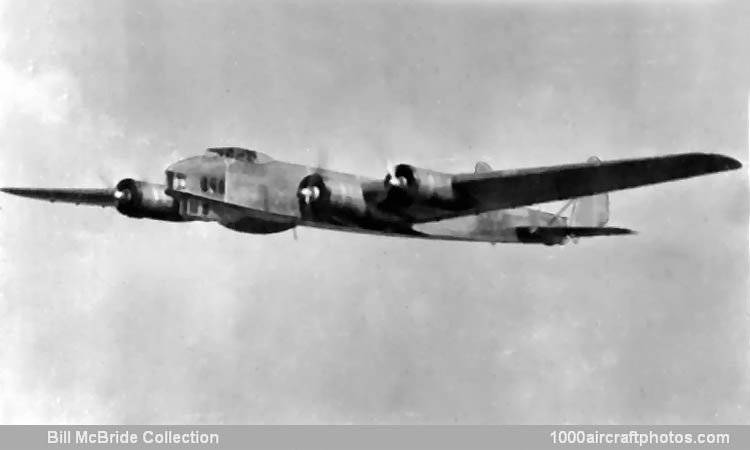Uralbomber. The first four-engine "strategist" of the Third Reich

This Teutonic "monster" with an angular and rough appearance is found in domestic archival documents only once, but, really, its unusualness is worth telling about it. The four-engined heavy bomber Dornier Do-19 was built in a single copy, made the first flight in the 1936 year, and was not mass-produced. In 1939, the only flight prototype of the Do 19V1 was converted into a transport one and even for a short time was used in this capacity during a Polish company. It was not on the Eastern Front, and could not be. And yet - on August 24 of 1941, a pair of 153 X-NUMX and X-NUMX air defense systems in Leningrad were “shot down” in the Ryabovo area by exactly “Pre-192”. But let's not rush things and start from the very beginning.
The ability to recreate strategic aviation It began to be discussed in Germany in 1934. Even then, the problem of choosing between tactical and strategic aviation appeared, which did not lose its acuity until 1944. A heavy bomber is an expensive toy, the equivalent of several front-line ones, and the resources of a warring country are always limited. The most active lobbyist of the "strategists" was the first chief of the Luftwaffe general staff, Walter Wefer, who believed that the Reich in any case needed an aircraft that could reach the enemy’s industrial centers. I must say that Walter Wefer was an interesting enough figure of Nazi Germany to tell a little more about him. Walter Wefer began his military service in the Kaiser army in 1905. In 1914 he fought on the Western Front as a platoon commander. In 1915, Weefer was awarded the rank of captain, and he was sent to the General Staff, where, despite his low rank, he proved himself to be a capable tactician and organizer. In 1917, Wefer became adjutant to General Erich Ludendorff and later gained a reputation as one of the best students of Ludendorff. After the end of the 1st World War, Wefer continued to serve in the management of the Reichswehr personnel, where he earned great respect from the commander of the armed forces of the Weimar Republic, Colonel General Hans von Zeekt. In 1926, Weefer was awarded the rank of Major, and in 1930 - Colonel. In 1933 he became the head of the department of military educational institutions. The Minister of War of the Third Reich, General Werner von Blomberg, realizing the need for the Luftwaffe created by competent leaders, transferred his best staff officers to this department, among whom was Wefer. To him, Blomberg noted that the army was losing the future chief of the General Staff. Wefer (by this time already Lieutenant General), in an incredibly short time, delved into all the problems of the Luftwaffe and determined the priority directions for their development. Unlike other staff officers, he realized that Hitler did not seek to take revenge from France and Great Britain for the defeat in the "great war." The Führer believed that Russia would become the main strategic opponent of the “Third Reich” in the struggle to conquer the “living space” (Lebensraum). Guided by these considerations, Wefer organized the Luftwaffe in the hope of a strategic air war with the Soviet Union, considering it much more important (based on the need to save human and material resources of the Reich) to destroy the enemy weapons at the enterprises producing it, than on the battlefields. He was confident that Germany needed a heavy bomber with a sufficient range to destroy targets in Soviet industrial areas and, moreover, capable of reaching the Ural Mountains, which are 1500 miles from the German airfield closest to the USSR. In the end, he managed to convince both Goering and Milch of the need to create heavy long-range bombers capable of achieving these goals. As a result, in 1934, the German Reichminister of Aviation (RLM) formed the requirements for a new four-engined bomber which was to surpass the best heavy bomber of that time — the Soviet TB-3. According to the task, the aircraft was supposed to be a free-flying monoplane with retractable landing gear, which should be able to deliver 2,5 tons of bombs to targets in the Urals or in Scotland. The project received the sonorous name "Uralbomber."
Here is what A. Speer (Reich Minister of Arms of Germany) wrote in his memoirs about potential goals for Uralbomber: “We remembered vulnerabilities in the Russian energy sector. According to our data, there was no well-established air defense system ... In the Soviet Union, electricity production was concentrated in several points, usually located on a vast territory of industrial zones. For example, Moscow was supplied with electricity by the electric center located in the upper Volga. But according to the information received, 60% of all the devices necessary for the optical and electrical industry were manufactured in Moscow ... It was enough to bring down a hail of bombs at power plants, as in the Soviet Union steel mills would stand up and production would completely stop tanks and ammunition. Since many Soviet power plants and factories were built with the help of German firms, we had all the technical documentation. ” An interesting fact ... Moscow aircraft factories were built by specialists from the Junkers and Dornier firms, and it was to these firms in the summer of 1935 that Walter Wefer transferred specifications for a new aircraft intended for the bombing of Soviet factories. By the way, these companies have already carried out preliminary studies of the project, on the basis of which the technical department prepared specifications. In early autumn, each of the companies ordered three experimental aircraft, designated Do-19 and Ju-89.

The creation of Do-19 was considered by Dornier as a priority task, the work on this aircraft was carried out so intensively that the assembly of the first prototype of the D-19 V1 was completed a little more than a year after receiving the specification. The plane made its first flight 28 in October 1936. Naturally, the Soviet TB-3 (created in 1930) had a great influence on German designers. By analogy with it, the Do-19 was also designed as a free-flying monoplane with a medium wing layout. The all-metal fuselage, as on the TB-3, had a rectangular cross-section and consisted of three parts: the nose, the middle (up to the front wing spar) and the rear (from the second wing spar). The middle and rear parts of the fuselage were bolted to the center section. The wing, like the TB-3 wing, was very thick with a wide chord and had a two-spar design with a smooth working skin. The power nacelles of four Bramo 109 322 J2 air-cooled engine nacelles were fastened to the power components of the wing. Their power was HP 715. each. The screws were three-blade metal VDM changeable in flight pitch. The engine nacelles of the internal engines were equipped with compartments in which the main landing gear was retractable in flight (the tail wheel was retracted into the fuselage). The bomber could reach speeds of 315 km / h. It should be said that the Do-19 VI had the Ascania-Sperry autopilot - for the first time among the bombers. At that time, no aircraft of either Germany or other countries of the world had such a device. The crew included nine people (commander, second pilot-navigator, bombing operator, radio operator and five shooters), the Do-19 V2 version is sometimes reported on the crew size - 10 people.
To accommodate the bomb load in the fuselage there was a compartment equipped with cluster bomb racks. The total weight of the bombs is 1600kg (16 bombs on 100 kg or 32 bombs weighing 50 kg each).
If the first Do-19 V1 prototype flew without defensive armament, then on the second and third prototypes and production aircraft it was supposed to have very powerful defensive armament for those times consisting of four rifle installations:
• one installation with a 7.92-mm machine gun MG 15 in the bombardier's nose turret,
• two turrets with 20 mm MG151/20 cannons on top and bottom of the fuselage,
• one installation with a 7.92-mm machine gun in the rear fuselage.
The turrets were very original, double, in design they resembled naval artillery towers: one gunner ran the turret along the horizon, the other with guns vertically. However, this tower, designed in parallel with the aircraft, turned out to be heavier and more cumbersome than it could be accepted. Static tests showed that the installation of the towers would require a significant strengthening of the design of the central section of the fuselage. In addition, the towers created a lot of aerodynamic resistance, and their weight significantly increased the already overestimated take-off weight of the aircraft. The weight problem particularly affected the aircraft’s airspeed: with the Bramo 322H-2 engines and turrets, it was 250 km / h I and the height 2000 m, which in no case did not suit the Luftwaffe command (TB-3 of the 1936 model flew at 300 speed km / h at an altitude of 3000 m). Therefore, the armament on the V1 was not mounted. V2 was scheduled for VMW-132F 810ls power on takeoff and 650ls on nominal. Armament was planned to be installed only on VZ.
But since there was no other tower for installation, and the flight characteristics were supposed to be acceptable, Dornier proposed a more powerful production model Do-19a with four Bramo 323А-1 “Fafnir” engines with 900 HP on take-off and HP 1000. . at a height of 3100 m. Naturally, in the future, still planned to install lighter towers. The take-off weight of the Do-19a was estimated at 19 tons, speeds up to 370 km / h and range to 2000 km; The height in 3000 m was typed in 10 minutes, and the ceiling in 8000 m.

However, these plans were not realized: the fate of the aircraft was directly related to its ideological father, General Walter Vefer, and after his death in a plane crash on June 3, 1936, the program for creating the Ural bomber was gradually curtailed.
Vefer's receiver, Lieutenant-General Albert Kesselring, decided to revise the Uralbomber program. The Luftwaffe headquarters has already developed the basic parameters of a much more promising heavy bomber. Requirements for such a "Bomber A" were transferred to Heinkel, who began work on the 1041 Project, which was embodied in He-177. Kesselring concluded that a smaller twin-engine bomber is sufficient for a war in Western Europe. The main goal of the Luftwaffe was determined rather at the tactical than at the strategic level. Given the limited capabilities of the German aircraft industry, a heavy bomber could be produced only to the detriment of fighters and tactical bomber. Thus, despite the protests of the Technical Department, 29 on April 1937, all work on the Uralbomber was officially discontinued.

However, despite the official order to discontinue work on Do-19 due to the lack of a decision to launch it into mass production, the tests of the aircraft continued. 83 test flights were carried out, but in the end they decided to scrapping all the built (under construction) Do-19 aircraft and delete from the plans all the design work on the creation of long-range bombers. Many experts believe that when creating the Luftwaffe, the exclusion of four-engine heavy bomber from the development program of aviation was one of the most fatal mistakes.
Admiral Laas (President of the German Aviation Industry Association) 1 on November 1942 wrote to Field Marshal Milch "Both [Do-19 and Ju-89 machines], subject to continuous improvement, would have surpassed American and British long-range bombers." However, such a development is unlikely. Most likely, Germany in the mid-thirties could get, like the USSR with its TB-3, an armada of quickly-established "strategists" that would be problematic to use against strategic facilities in the Soviet Union that had a very good object air defense system. If you still compare with the British bombers, then the maximum that could be obtained from Do-19, subject to continuous improvement, is the same flying misunderstanding as the Short Stirling, with which the German "strategist" looked like even outwardly.

As a result, the almost complete Do-19V2 and the half-assembled V3 were sent for scrap. The Do-19V1 was preserved; in 1939, it was converted into a transport plane and accepted into the Luftwaffe. It was used in the Polish campaign, then its traces are lost. There is no evidence that this plane hit the Eastern Front, nor documents proving the opposite. Nevertheless, the fact that the Do-19V1 was shot down in the sky of Leningrad is in doubt. It should be remembered that in the first period of the war the pilots had serious problems with the identification of enemy aircraft. In particular, many reports featured downed Non-100 and Non-112, which in principle could not be. Therefore, the "identify" Do-19 "Stalin falcons" could in any other unusually large aircraft.

Modification: Do.19 V-1
Wingspan, m: 35.00
Length, m: 25.45
Height, m: 5.80
Wing area, м2: 155.00
Weight, kg of empty aircraft: 11875
Mass, kg normal take-off: 18500
Engine type: PD Bramo (Siemens) -322H-2
Power, hp : 4 × 715
Maximum speed, km / h: 374
Cruising speed, km / h: 350
Fighting range, km: 1600
Maximum rate of climb, m / min: 295
Practical ceiling, m: 5600
Crew: 4
weaponry
small (not installed)
1 × 7,92-mm MG-15 in the nose tower,
1 × MG15 on the open tail turret,
mechanically driven upper and lower turret with 1 × 20mm MG FF
bomb load, kg: 3000
Sources:
W. Green "Wings of the Luftwaffe (combat aircraft of the Third Reich)"
Aviation and Cosmonautics 1996 №11-12
"Science and technology" Moroz SG "The fall of the" iron eagle "
Shunkov V. “Aircraft of Germany of the Second World War”
owl-99 "Phantoms" of the sky of the Great Patriotic War "
Information